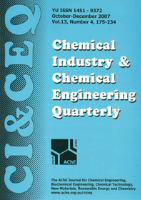
Chemical Industry & Chemical Engineering Quarterly
Scope & Guideline
Elevating Standards in Chemical Engineering Research.
Introduction
Aims and Scopes
- Chemical Process Engineering:
Research on the design, optimization, and simulation of chemical processes, including thermodynamic modeling and reaction kinetics to enhance efficiency and sustainability. - Material Science and Engineering:
Studies focused on the development and characterization of new materials, including nanomaterials and biopolymers, with applications in various industrial processes. - Environmental Engineering and Sustainability:
Investigations into methods for pollution control, waste management, and the development of eco-friendly processes that minimize environmental impact. - Renewable Energy and Resource Management:
Research dedicated to the conversion of biomass, waste materials, and renewable resources into energy or value-added products, emphasizing sustainability. - Biochemical Engineering:
Explorations of bioprocesses and biotechnology applications, including microbial fermentation and enzymatic processes for the production of biofuels and biochemicals. - Advanced Analytical Techniques:
Development and application of novel analytical methods and technologies to characterize materials and monitor chemical processes.
Trending and Emerging
- Sustainable and Green Chemistry:
There is a marked increase in research dedicated to sustainable practices, including the development of biodegradable materials and green chemical processes that reduce environmental impact. - Nanotechnology and Advanced Materials:
The use of nanomaterials in various applications, including catalysis and biomedicine, is trending upwards, showcasing innovative approaches to material science. - Process Simulation and Modeling:
Enhanced computational methods for process simulation, including the use of artificial intelligence and machine learning, are emerging as key tools for optimizing chemical engineering processes. - Bioprocessing and Bioengineering Innovations:
Research on bioprocessing techniques, including the production of biofuels and biochemicals from renewable resources, is gaining prominence as industries seek sustainable alternatives. - Waste Valorization and Circular Economy:
Increasing focus on recycling and converting waste materials into valuable products signifies a shift toward a circular economy model in the chemical industry.
Declining or Waning
- Traditional Chemical Manufacturing Processes:
Research focusing on conventional chemical processes without incorporating modern technologies or sustainability aspects is becoming less prevalent, as the industry shifts toward greener methodologies. - Inorganic Chemistry and Traditional Catalysis:
There is a noticeable decline in papers centered on purely inorganic chemistry and traditional catalytic processes, as the focus moves toward more innovative and sustainable catalytic systems. - Basic Chemical Education and Theory:
Papers that primarily address foundational chemical education or theoretical aspects without practical applications are being published less frequently, indicating a shift towards applied research. - Static Experimental Studies:
Research that emphasizes static, non-dynamic experimental setups is declining, as there is a growing preference for studies that incorporate real-time data and dynamic modeling. - Chemical Safety and Risk Assessment:
While still important, the frequency of papers specifically dedicated to traditional safety protocols and risk assessments in chemical processes appears to be decreasing in favor of more integrated safety approaches.
Similar Journals

Applied Chemistry for Engineering
Pioneering Research for Tomorrow's Engineering ChallengesApplied Chemistry for Engineering, published by the Korean Society of Industrial and Engineering Chemistry, is a vital resource for researchers and professionals engaged in the realms of chemical engineering and applied chemistry. With an ISSN of 1225-0112 and an E-ISSN of 1228-4505, this journal serves as a platform for innovative research that spans diverse applications within these fields. Although currently not classified under open access, it provides critical insights and advancements to its audience, contributing to the ongoing discourse in the industry. The journal's significance is underscored by its rankings in Scopus, where it resides in the Q4 category for both Chemical Engineering and Chemistry, evidencing its commitment to publishing relevant studies despite its emerging status. As it continues to grow through the converged years from 2007 to 2024, Applied Chemistry for Engineering aims to bridge the gap between theoretical research and practical engineering solutions, making it an essential tool for students, researchers, and professionals alike.
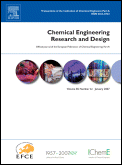
CHEMICAL ENGINEERING RESEARCH & DESIGN
Shaping Tomorrow's Chemical Engineering Landscape.CHEMICAL ENGINEERING RESEARCH & DESIGN is a prestigious journal that has been at the forefront of dissemination in the fields of chemical engineering and general chemistry since its inception in 1983. Published by Elsevier, the journal features a rich array of research articles that contribute to both theoretical and practical advancements in the discipline. With an impact factor that positions it strongly within the Q2 quartile for both Chemical Engineering and Chemistry categories, it occupies an esteemed place in the academic community, being ranked #77 out of 273 in Chemical Engineering and #111 out of 408 in General Chemistry on Scopus. Researchers and professionals will find it an invaluable resource for cutting-edge research and innovative methodologies that shape the future of chemical engineering applications. While the journal does not currently offer open access, it remains accessible through institutional subscriptions, ensuring that important findings continue to reach a broad audience. With a scope that is poised to expand through 2024, the journal aims to foster collaboration and knowledge sharing, supporting the continuous evolution of the field.
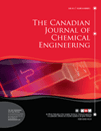
CANADIAN JOURNAL OF CHEMICAL ENGINEERING
Delivering Insightful Perspectives in Chemical EngineeringCanadian Journal of Chemical Engineering, published by Wiley, stands as a pivotal platform in the field of chemical engineering, addressing a myriad of topics essential for researchers, professionals, and students alike. With ISSN 0008-4034 and E-ISSN 1939-019X, this journal has been a cornerstone of chemical engineering scholarship since its inception in 1958 and continues to provide valuable insights through its rigorous peer-reviewed articles. The journal is ranked in the Q2 category of the Scopus quartile rankings, reflecting its influence and relevance within the chemical engineering community, with a notable position of #137 out of 273 in the general chemical engineering field. Although it does not offer open access options, its comprehensive coverage of contemporary research and applications solidifies its status as a vital resource for advancing knowledge and innovation in chemical engineering.
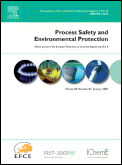
PROCESS SAFETY AND ENVIRONMENTAL PROTECTION
Elevating standards in process safety and environmental science.PROCESS SAFETY AND ENVIRONMENTAL PROTECTION, published by Elsevier, is a premier academic journal dedicated to advancing the fields of chemical engineering, environmental science, and safety management. With an impressive impact factor, this esteemed journal undergoes a meticulous peer-review process and serves as a vital platform for researchers, professionals, and students seeking to disseminate cutting-edge research and innovative practices. Submissions are welcome in a wide scope of topics related to safety, risk, reliability, and environmental engineering, demonstrating its influence as a Q1 journal across multiple categories, including Environmental Chemistry and Safety, Risk, Reliability and Quality. By providing a rigorous analysis of current challenges and solutions in the domain since its inception in 1990, it continues to foster interdisciplinary collaboration and practical applications in the United Kingdom and beyond. With the journal not currently offering Open Access options, subscribers gain exclusive access to pivotal insights that shape industry standards and drive advancements in sustainable practices.

Revista Mexicana de Ingenieria Quimica
Advancing the Frontiers of Chemical EngineeringRevista Mexicana de Ingenieria Quimica, published by UNIV AUTONOMA METROPOLITANA-IZTAPALAPA, serves as a vital academic platform for the dissemination of innovative research in the field of chemical engineering. Established in 2008, this journal has become a respected source of knowledge, reflecting the ongoing advancements and challenges in the discipline. As a Q3 ranked journal in the field of Chemical Engineering, it holds a significant position with a meaningful impact amongst its peers, showcasing diverse aspects of chemical engineering and applications. With contributions from various scholars, it actively engages the global research community and promotes collaboration among professionals and students alike. While currently not designated as an open-access publication, the journal is accessible through institutional subscriptions, ensuring that valuable insights and findings reach a broad audience. Researchers looking to stay at the forefront of chemical engineering would benefit immensely from the cutting-edge studies and reviews published in Revista Mexicana de Ingenieria Quimica.

Journal of Chemistry and Technologies
Advancing Chemistry, Inspiring Innovation.The Journal of Chemistry and Technologies, published by OLES HONCHAR DNIPROPETROVSK NATIONAL UNIVERSITY, is an open access journal dedicated to advancing knowledge in the broad fields of chemistry and chemical engineering since its inception in 2013. With ISSN 2663-2934 and E-ISSN 2663-2942, this journal provides a vital platform for researchers and professionals, particularly in Ukraine and beyond, to share innovative research findings and contemporary technological advancements. Currently ranked in the Q4 quartile in both Chemical Engineering and General Chemistry for 2023, it serves as an enriching resource for those interested in emerging trends and interdisciplinary studies within these domains. The journal adheres to high academic standards while fostering collaboration in the scientific community by offering open access articles that ensure visibility and accessibility to a global audience. As an important part of the academic landscape, the Journal of Chemistry and Technologies aims to inspire future research and development, paving the way for new discoveries and applications in chemistry-related fields.

BRAZILIAN JOURNAL OF CHEMICAL ENGINEERING
Shaping the Future of Chemical Engineering, TogetherThe Brazilian Journal of Chemical Engineering (ISSN: 0104-6632, E-ISSN: 1678-4383), published by Springer Heidelberg, stands as a prominent open-access journal dedicated to disseminating innovative research and advancements in chemical engineering since its inception in 1997. With a commitment to enhancing knowledge exchange within the field, this journal is indexed in Scopus, earning a respectable Q3 rank in the category of General Chemical Engineering as of 2023. It provides a platform for researchers, professionals, and students to explore a diverse range of topics, fostering collaboration and innovation from its base in Brazil. The journal has converged its operations from 1995 and will continue to push the boundaries of chemical engineering research until 2024 and beyond. As a critical resource for up-to-date methodologies and emerging trends, the Brazilian Journal of Chemical Engineering is essential for those aiming to make impactful contributions in this dynamic and evolving field.
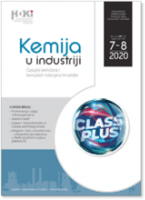
Kemija u Industriji-Journal of Chemists and Chemical Engineers
Fostering collaboration in the realm of chemical engineering.Kemija u Industriji - Journal of Chemists and Chemical Engineers is an esteemed open-access journal published by the HRVATSKO DRUSTVO KEMJIJSKIH INZENJERA I TEHNOLOGA, dedicated to advancing the field of chemical engineering and chemistry. Since its establishment, this journal has served as a pivotal platform for the dissemination of innovative research, technical development, and interdisciplinary studies within the chemical industry. With its ISSN 0022-9830 and E-ISSN 1334-9090, the journal has established a significant international presence, despite its historical discontinuation from Scopus coverage. Researchers and professionals seeking to contribute to or stay updated on the latest advancements in chemical processes, materials science, and engineering practices will find this journal invaluable. Its commitment to open access since 2004 ensures that knowledge is freely available, enhancing collaboration and learning among students, scientists, and engineers alike. With a legacy that reflects the rich tradition of chemical innovation, Kemija u Industriji continues to be a vital resource, promoting the scientific community's synergy and inspiring future breakthroughs.

CHEMICAL ENGINEERING & TECHNOLOGY
Exploring the Intersection of Chemistry and TechnologyChemical Engineering & Technology is a prestigious journal published by Wiley-VCH Verlag GmbH, focusing on the evolving field of chemical engineering and its related disciplines. With an ISSN of 0930-7516 and E-ISSN of 1521-4125, the journal has established a robust platform for researchers and practitioners to share pioneering studies and innovative technologies within the field. Classified in the second quartile (Q2) across multiple categories such as Chemical Engineering, Chemistry, and Industrial and Manufacturing Engineering, it holds an impressive rank in the Scopus database, indicating its significant contribution to the academic community. The journal's commitment to advancing knowledge is reflected in its extensive convergence of research from 1987 to 2024, providing a comprehensive archive of scholarly work. Researchers, professionals, and students benefit from the latest insights and findings, enriching the dialogue around chemical processes and methodologies. Though it operates under a traditional subscription model, the accessibility of this journal is crucial for those engaged in both theoretical and applied aspects of chemical engineering.

International Journal of Chemical Reactor Engineering
Advancing the Frontiers of Chemical Reactor ScienceInternational Journal of Chemical Reactor Engineering, published by WALTER DE GRUYTER GMBH, serves as a vital platform for advancing knowledge in the field of chemical engineering, specifically focusing on reactor engineering. The journal, recognized by its ISSN 2194-5748 and E-ISSN 1542-6580, has maintained its commitment to quality research since its inception in 2002 and spans converged years through 2024. With a respectable Q3 ranking in the miscellaneous category of Chemical Engineering and a current Scopus rank of 158/273, it represents a significant resource for researchers aiming to publish innovative findings and practical applications. Although it operates under a subscription model, it still attracts attention for its rigorous standards and insightful contributions to the field. The journal’s focus on the interdisciplinary aspects of chemical reactor design, optimization, and safety underscores its importance in driving forward the technical and theoretical boundaries of chemical engineering. Addressed from Genthiner Strasse 13, D-10785 Berlin, Germany, the International Journal of Chemical Reactor Engineering is a must-read for professionals and scholars dedicated to pushing the frontiers of chemical reaction technologies.